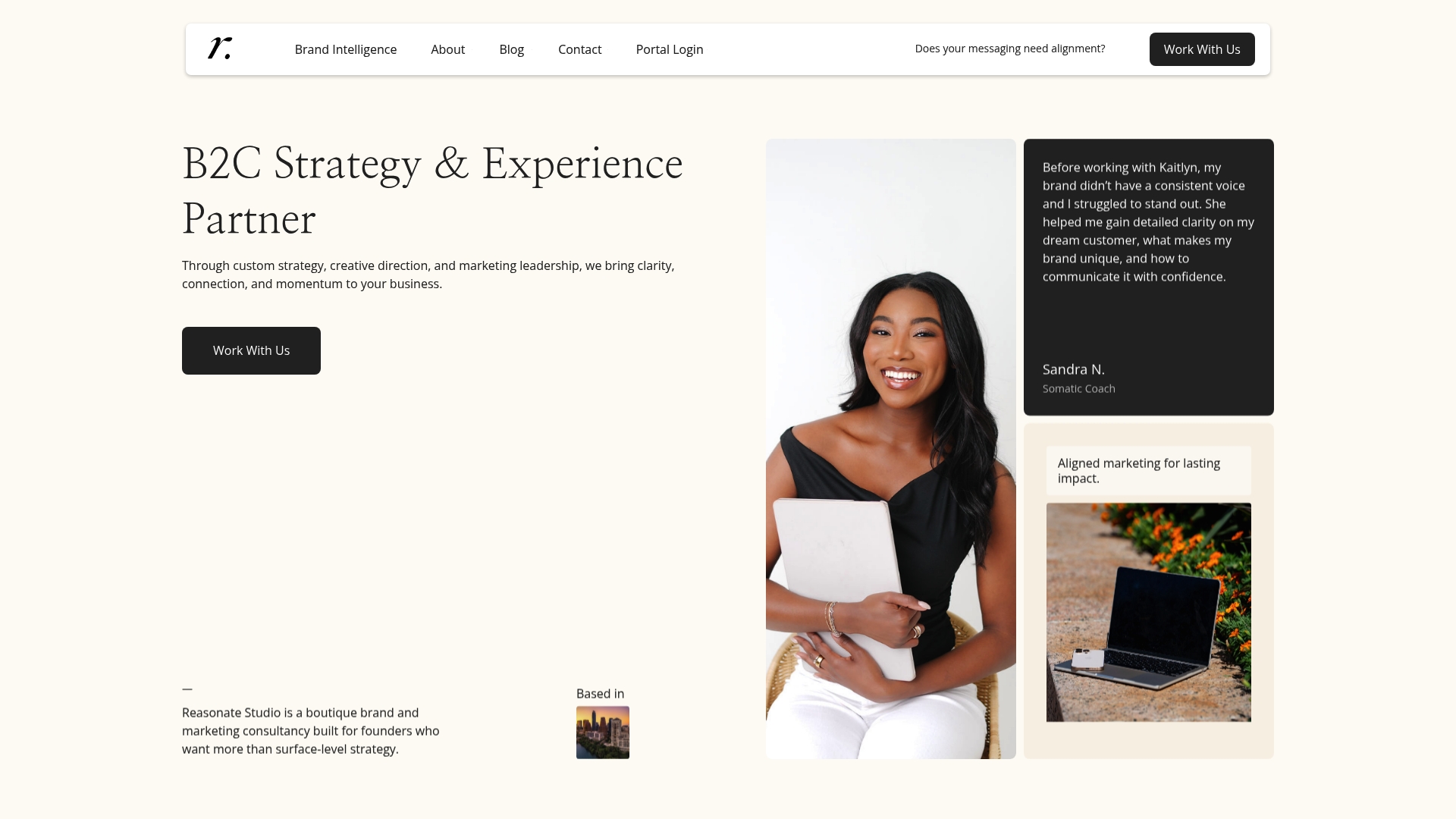Branding Strategies: Building Impactful Small Businesses

Discover essential elements of brand identity, including visual assets, voice, positioning, and integration for business growth in this comprehensive guide.

Did you know that businesses with strong brand identities are over 70 percent more likely to be remembered by consumers? Standing out in a world of endless choices now depends on more than a catchy logo. Your brand’s identity shapes customer trust, fuels recognition, and builds loyalty that keeps them coming back. Uncover how these elements work together to make your business not just visible, but memorable and trusted.
Your brand identity is more than just a logo or color palette. It’s the strategic blueprint that communicates who you are as a business, what you stand for, and how you want the world to perceive you. Think of it like your business’s personality – a unique fingerprint that sets you apart in a crowded marketplace.
At its core, brand identity encompasses both visual and verbal elements that work together to tell your company’s story. This includes critical components like:
The research highlights that brand identity serves as an “intangible asset” representing your enterprise’s image. It’s how consumers quickly recognize and differentiate your brand from competitors. When done strategically, your brand identity becomes a powerful communication tool that instantly signals your unique value proposition.
Building a strong brand identity isn’t about looking pretty – it’s about creating a consistent, memorable experience that resonates with your target audience. Check out our guide on brand strategy to dive deeper into crafting an identity that truly connects and converts.
Brands communicate volumes through their visual identity, with three core elements serving as the foundational building blocks: logos, typography, and color. Each plays a strategic role in crafting a memorable and impactful brand experience that goes far beyond mere aesthetics.
Here’s a summary comparing the core elements of visual brand identity:
| Element | Definition | Key Impact | Example Effect |
|---|---|---|---|
| Logo | Visual symbol or signature | First impression | Communicates trust, style |
| Typography | Font and typeface choices | Emotional tone | Signals tradition, modernity |
| Color | Palette of brand colors | Emotional resonance | Evokes excitement, calm |

A logo is your brand’s visual signature – the first impression that encapsulates your entire brand story. Recent research suggests logos are complex multi-modal designs that can now be generated using advanced creative technologies. They’re not just static images, but dynamic representations of your brand’s personality, mission, and values. A well-designed logo can communicate professionalism, creativity, and trustworthiness in a single glance.
Typography and color work together to amplify your brand’s visual language. Typography isn’t just about selecting fonts – it’s about choosing typefaces that semantically represent your brand’s character. Innovative design approaches now allow for semantic typographic logos that blend typeface and imagery while maintaining perfect legibility. Your font choices communicate subtle emotional cues: a bold sans-serif might signal innovation and confidence, while a classic serif could suggest tradition and reliability.

Color psychology plays a crucial role in brand perception. Different colors evoke specific emotional responses and can significantly influence how your audience perceives your brand. Learn more in our about how we approach brand strategy to understand how these visual elements come together to create a cohesive brand identity that resonates with your target audience.
Your brand voice is the personality that speaks directly to your audience, transforming your business from a faceless entity into a relatable, memorable character. It’s more than just words – it’s the consistent emotional tone that connects your brand with your ideal customers, creating a unique communication style that sets you apart from competitors.
Brand messaging goes beyond simple taglines and value propositions. It’s a strategic narrative that encapsulates what your brand stands for, communicating your core values, mission, and unique selling points. Research highlights that effective brand messaging should clearly articulate what you offer and why you matter. This means crafting a communication strategy that resonates on both rational and emotional levels, speaking directly to your audience’s needs, desires, and aspirations.
Storytelling is the powerful bridge that transforms bland communication into compelling narratives. Visual rhetoric research suggests that every element of your communication – from the words you choose to the way you arrange them – can be a strategic tool for conveying your brand’s essence. Your brand story isn’t just about what you do, but why you do it. It’s about creating an emotional connection that turns casual observers into loyal advocates.
Building a consistent brand voice requires intentionality and discipline. Learn more about our approach to brand strategy to understand how we help businesses craft narratives that truly resonate with their target audience, turning communication into a powerful tool for connection and growth.
Brand positioning is the strategic heartbeat of your business identity – the unique space you occupy in your customers’ minds. It’s not just about what you sell, but how you differentiate yourself in a crowded marketplace. Think of it as your brand’s DNA, the core essence that sets you apart from every other competitor vying for your audience’s attention.
Your brand’s values are the fundamental beliefs that drive every decision and interaction. More than just words on a website, they’re the moral compass that guides your business behavior. Research highlights that successful brands are symbol-intensive – they go beyond functional benefits to transmit powerful symbolism. Consumers don’t just buy products; they buy into identities, status signals, and a sense of belonging. When your values resonate authentically, you transform from a mere business into a movement that people want to be part of.
Brand personality is the human dimension of your business. It’s how you would sound, act, and feel if your brand were a person. Are you the witty friend, the trustworthy advisor, the innovative rebel? This personality should be consistent across every touchpoint – from your website copy to customer service interactions. Your brand personality creates an emotional connection that turns transactional relationships into loyal communities. It’s about crafting a consistent character that your audience can relate to, trust, and ultimately choose over competitors.
Discover how we help brands define their unique positioning and transform abstract concepts into powerful, actionable brand strategies that create meaningful connections with your ideal audience.
A cohesive brand identity isn’t about looking the same everywhere – it’s about feeling consistent everywhere. Your brand should create a seamless experience that feels intentional and authentic across every single interaction a customer might have, from your website to social media, customer service, packaging, and beyond.
Visual brand language is the strategic backbone of this integration. It’s the intentional use of design elements like shape, color, typography, and composition that subliminally communicate your brand’s personality. Think of it as your brand’s visual dialect – a set of design principles that work together to tell a unified story. This means your Instagram post should feel connected to your product packaging, which should feel connected to your customer support email template.
Beyond visual consistency, true brand integration is about creating a brand community – structured social relationships where customers feel a deep connection and sense of belonging. This goes far deeper than visual aesthetics. It’s about creating shared rituals, traditions, and experiences that make customers feel they’re part of something larger than a simple transaction. Your brand becomes a platform for connection, not just a provider of products or services.
Learn how we help brands create seamless, meaningful experiences that transform customers from casual buyers into passionate advocates who genuinely feel connected to your brand’s mission and values.
Building a strong brand identity seems straightforward, but many entrepreneurs fall into subtle traps that can derail their entire branding strategy. The most common mistake is treating your brand as an afterthought – a logo slapped onto marketing materials – rather than a comprehensive, intentional expression of your business’s core essence.
Inconsistency is the silent killer of brand recognition. Many businesses inadvertently create a fractured brand experience by using different voices, visual styles, and messaging across various platforms. This scattered approach confuses potential customers and dilutes your brand’s perceived value. Research highlights that a clear and strong brand identity isn’t just about marketing – it’s a competitive advantage that can attract potential employees, partners, and customers who resonate with your authentic story.
Another critical pitfall is mimicking competitors instead of defining your unique value proposition. Successful brands don’t blend in – they stand out. This means going beyond surface-level imitation and deeply understanding what makes your business unique. Your brand should reflect your genuine personality, values, and the specific problem you solve for your ideal customers. Authenticity isn’t just a buzzword – it’s the foundation of building trust and creating meaningful connections that transform casual interactions into loyal relationships.
Discover how we help brands avoid these common branding mistakes and create a powerful, distinctive identity that truly represents your business’s unique potential.
Struggling to create a brand identity that goes beyond just a logo? Many entrepreneurs face challenges turning abstract ideas into a clear, consistent brand personality and messaging that connects deeply with their audience. This guide reveals why a cohesive visual language, authentic brand voice, and strategic positioning are essential to stand out and foster lasting loyalty.
At Reasonate Studio we understand these pain points and use The Aligned Impact Model™ to simplify how you build your brand foundation, align messaging with your values, and execute growth-boosting strategies with clarity and intention. Our approach blends creativity with operational discipline so your brand identity becomes a powerful, strategic asset rather than an afterthought.

Ready to move beyond scattered branding into a purposeful, memorable identity? Discover how Reasonate Studio helps entrepreneurs like you craft compelling narratives and visual systems that convert. Learn how we define your unique positioning and develop storytelling that resonates by visiting our about page. Take the next step and create a brand experience that your customers truly connect with. Start your journey today at Reasonate Studio.
Brand identity is the strategic blueprint that communicates who your business is, what it stands for, and how you want to be perceived by the world. It encompasses visual and verbal elements, including logos, color schemes, typography, messaging, and core values.
Logos serve as the visual signature of your brand, creating the first impression. Typography conveys emotional tone through font choices, while color evokes emotional responses that influence brand perception, making them essential components in building a strong brand identity.
Brand voice is crucial as it represents the personality of your business, creating a relatable and memorable connection with your audience. A consistent brand voice helps express your core values and unique selling points effectively through your communication strategy.
Common pitfalls include treating branding as an afterthought, inconsistency across platforms, and mimicking competitors. To avoid these issues, focus on developing a comprehensive, authentic brand strategy that clearly reflects your unique value proposition and ensures consistent messaging across all touchpoints.